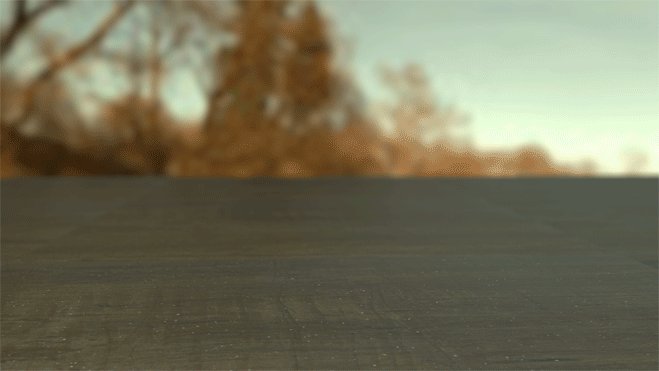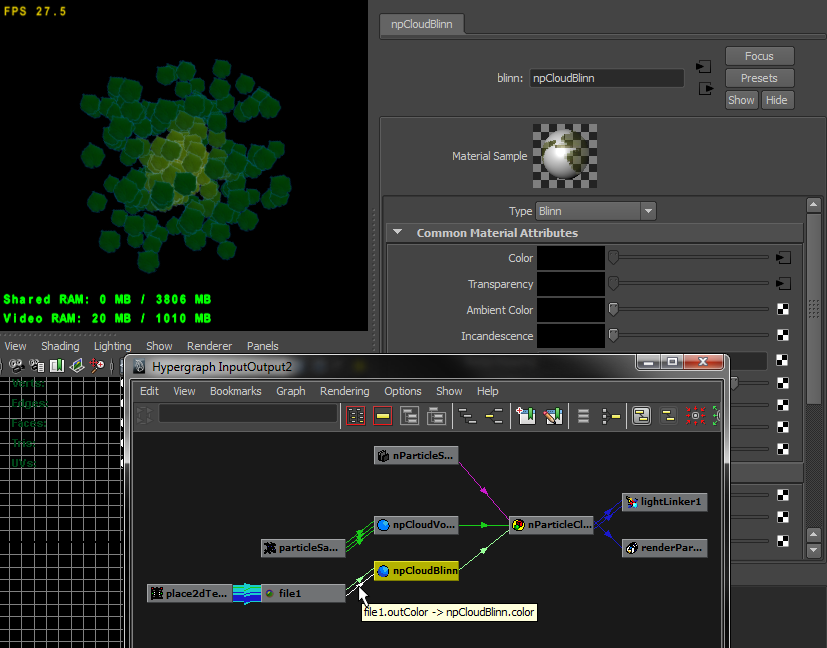Particle instancer
FurryBall supports rendering of object instanced with particles. To create particles Instancer select object and particle system and hit nParticles->Instancer. FurryBall renders instances automatically. No other settings are needed.

Particle System
FurryBall 3 introduces support for Maya particles (both NParticles and Particles). FurryBall tries to support most of the particle attributes the same way as Maya but unlike Maya Software or Maya Hardware, FurryBall supports both SW and HW types of particles and adds further custom settings in the Particle Attributes Node (see Particle Node section). See Maya documentation on particles and NParticles for explanation of individual attributes. We encourage you to use NParticle.

nParticle system rendered in FurryBall.
Many standard particle attributes such as radius, line width, multi count, opacity, etc. are supported. All individual particles in a system are automatically depth-sorted, the Depth Sort attribute has no effect. Also, all particle systems are automatically sorted in depth according to average particle depth. Individual particles from individual systems are not sorted together, this might cause artefacts when several systems are colliding and their depth order changes.
The Threshold, Better Illumination and Surface Shading attributes have no effect.
In FurryBall 3, the currently supported per-particle array attributes are:
The following particle render types are currently supported:
The rest of the render types are provisionally rendered as follows:
Some attributes behave slightly differently from Maya, such as Particle Size, which also affects Sprite size (unlike in Maya).
Sprite Textures
Sprite particles support textures. Connect your 2D sprite RGBA texture (PNG is recommended) into the color attribute of the Blinn material connected to the particle shading engine. Image sequences are also supported, consult this with Maya documentation.
Procedural and volume textures on sprites are unsupported. No other attributes affect FurryBall particles. The CloudVolume material is ignored for FurryBall particles.

A PNG texture with RGBA (transparent) channels connected to the color attribute of the Blinn shader of the shading engine connected to the particle shape.
Here, we also set the expression nParticleShape1.spriteTwistPP = rand(0, 45), which rotates each sprite randomly.
Shadows
FurryBall particles support both shadow casting and shadow receiving. Particle shadows are mainly affected by their opacity. Fourier shadows have to be enabled. The principle is the same as for Fluids (see Fluid Shadows and Light Node sections). Also see section Particle Node for special attributes which affect shadows.
Advanced Settings
For advanced tuning of particles, consult the Particle Node section.
Created with the Personal Edition of HelpNDoc: Produce Kindle eBooks easily